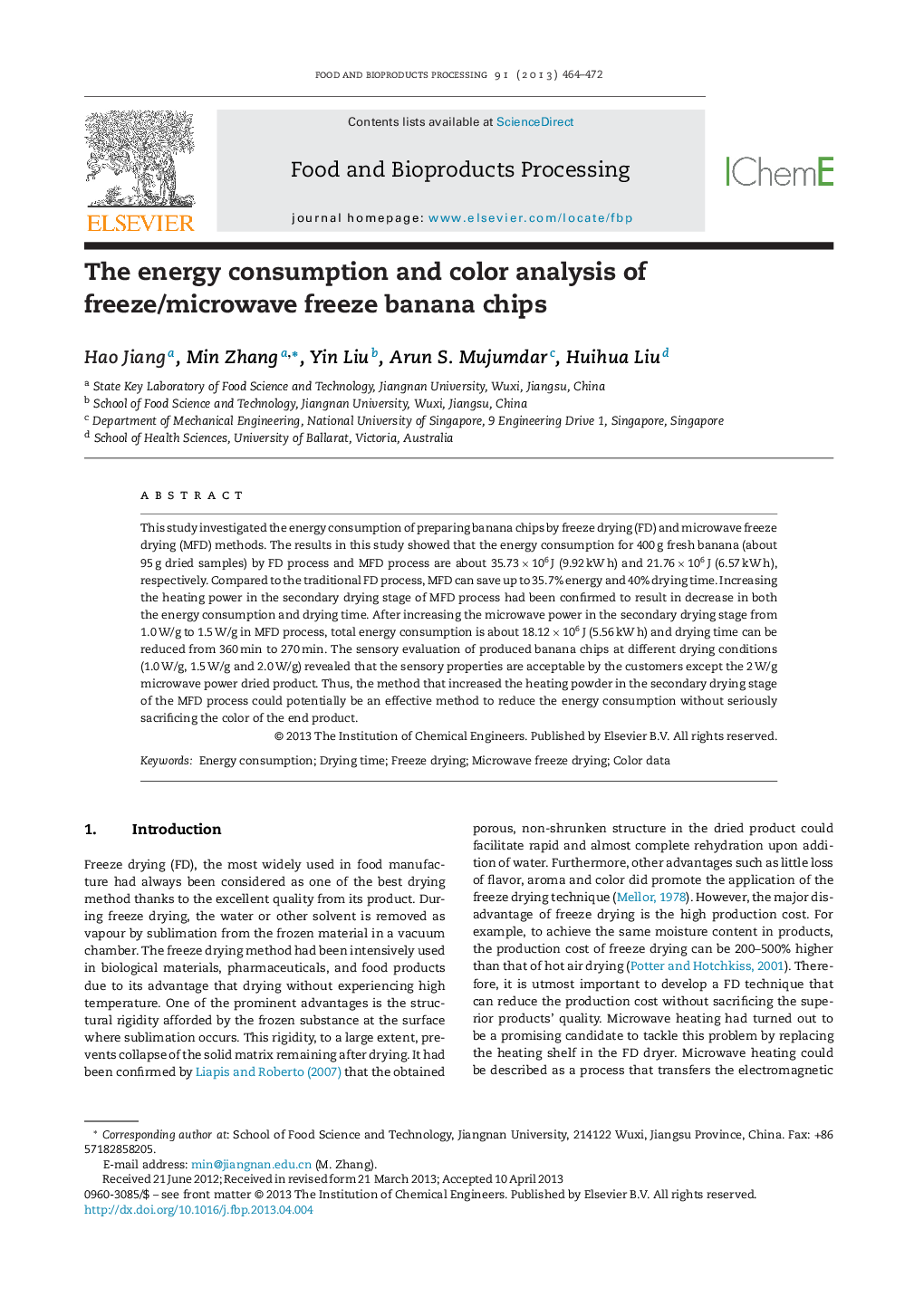| Article ID | Journal | Published Year | Pages | File Type |
|---|---|---|---|---|
| 19113 | Food and Bioproducts Processing | 2013 | 9 Pages |
•We compare the energy consumption between freeze and microwave freeze drying.•We adjusted the heating power in the secondary stage to process productions with high quality and low energy consumption.•Through sensory evaluation we choose the most suitable freeze drying/microwave freeze drying parameter.
This study investigated the energy consumption of preparing banana chips by freeze drying (FD) and microwave freeze drying (MFD) methods. The results in this study showed that the energy consumption for 400 g fresh banana (about 95 g dried samples) by FD process and MFD process are about 35.73 × 106 J (9.92 kW h) and 21.76 × 106 J (6.57 kW h), respectively. Compared to the traditional FD process, MFD can save up to 35.7% energy and 40% drying time. Increasing the heating power in the secondary drying stage of MFD process had been confirmed to result in decrease in both the energy consumption and drying time. After increasing the microwave power in the secondary drying stage from 1.0 W/g to 1.5 W/g in MFD process, total energy consumption is about 18.12 × 106 J (5.56 kW h) and drying time can be reduced from 360 min to 270 min. The sensory evaluation of produced banana chips at different drying conditions (1.0 W/g, 1.5 W/g and 2.0 W/g) revealed that the sensory properties are acceptable by the customers except the 2 W/g microwave power dried product. Thus, the method that increased the heating powder in the secondary drying stage of the MFD process could potentially be an effective method to reduce the energy consumption without seriously sacrificing the color of the end product.
